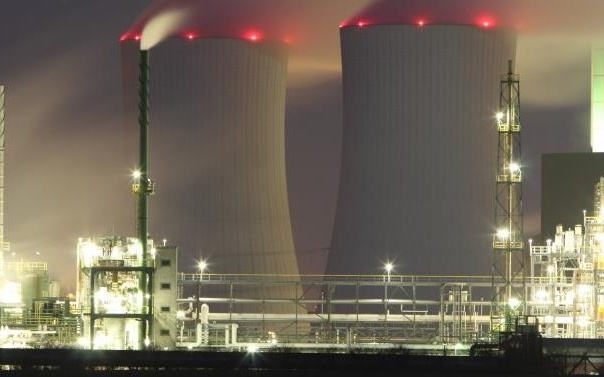The Zaporizhzhia nuclear power in southeast Ukraine amid shelling by Russian forces, March 4, 2022
Citing details of a Russian plan, the head of Ukraine’s atomic energy company says Moscow intends to take the occupied Zaporizhzhia nuclear power plant — Europe’s largest — off the Ukrainian electricity grid.
Petro Kotin said on Wednesday that Russian engineers drew up a blueprint as “emergency planning” if remaining power connections to the plant in southern Ukraine are severed.
They presented it to [workers at] the plant, and the plant [workers] presented it to us. The precondition for this plan was heavy damage of all lines which connect Zaporizhzhia nuclear power plant to the Ukrainian system.
He feared Russian forces have targeting the connections to turn the emergency scenario into a reality. Ukraine’s military says the occupiers, who seized the plant in early March, have shelled power lines and facilities in the complex.
Kotin echoed, “They just started doing that, they starting all the shelling, just to take out these lines.”
Three of the four main lines connecting the complex to Ukraine’s grid have been broken and two of the three back-up lines connecting the site to a conventional power plant are down.
Kotin also noted the numerous Russian vehicles in the plant, packed so tightly in turbine halls that firefighters would struggle to enter during a blaze.
Ukrainian workers are being harassed and intimidated. One was beaten to death, and another so severely injured that he needed three months to recover. More than 200 have been detained.
“A Radiation Catastrophe”
Kotin explained the risk of catastrophic failure, with no power to cool reactors, under the Russian plan: “You cannot just switch from one system to another immediately, you have to…shut down everything on one side, and then you start to switch on another side.”
During the switch, the plant relies only on a back-up diesel-powered generator. After 90 minutes without power, the reactors reach a dangerous temperature.
Kotin summarizes, “During this disconnection, the plant won’t be connected to any power supply and that is the reason for the danger. If you fail to provide cooling… for one hour and a half, then you will have melting already.”
Russia is using the plant to shell Ukrainian-held cities and towns across the Dnipro River, knowing that Ukraine cannot return fire because of the threat to the reactors.
Moscow has repeatedly rejected calls by the international community, including UN Secretary-General António Guterres, to demilitarize the complex and withdraw forces. The occupiers are also stalling over any access by International Atomic Energy Agency inspectors.
Kotin said he hoped nuclear inspectors will be able to visit within “one, maybe two weeks”: “There is progress in negotiations….There is only modalities of the mission to finally agree between parties, and after that they will go.”
But Ukraine President Volodymyr Zelenskiy said on Wednesday that Russia had put the world “on the brink of a radiation catastrophe”.
It is a fact that the Russian military made the territory of the largest nuclear power plant in Europe a combat zone….Now all of Europe and all neighbouring regions are under the threat of radiation pollution.
Kotin followed up with confidence that 9,000 Ukrainian workers still working at the plant can avert the disaster: “We won’t allow Russians to bring the world to the nuclear catastrophe and we will do everything just to return the plant to under our full control and operate it safely reliably, like it always been.”

